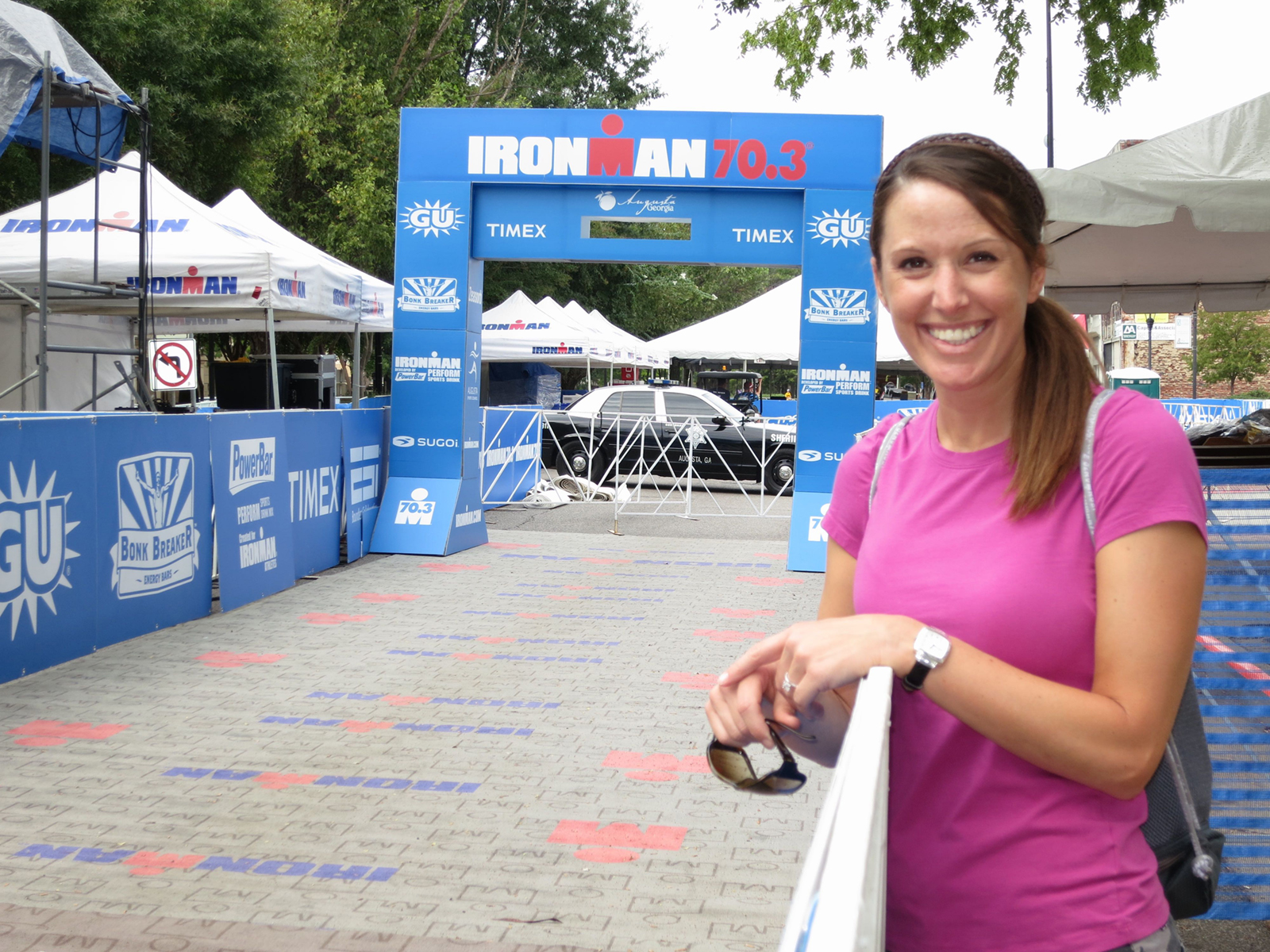When thinking of a triathlon, images of a grueling physical test that can turn even the toughest, most physically fit athletes into blubbering babies usually comes to mind. But the truth is that triathlons come in all shapes and sizes and so do competitors.
More and more women are joining the ranks of what many see as the ultimate test of endurance. While women triathletes admit it can be a daunting activity, they also say anyone can complete a triathlon with training and a little commitment.
You Can Do It
Stephanie Luther of downtown Orlando became involved with triathlons in 2013. At 40 years of age, she was searching for something in her life – outside of her career – to keep her challenged and fit.
One of her close friends had participated in a few triathlons, so Luther decided she would try one to see if it would be a fit for her. She chose a sprint distance for her first triathlon because she says it seemed like an achievable distance to train for and complete. A sprint typically consists of a half-mile swim, a 12-mile bike and a 3.1-mile run and can take between an hour for a well-trained athlete and two hours for a novice to complete.
The most well-known triathlon is the IRONMAN, which was conceptualized during an awards banquet for the Waikiki Swim Club. John Collins, a Naval Officer stationed in Hawaii, and his wife Judy began playing with the idea of combining the three toughest endurance races on the island into one race. They decided to issue a challenge to see who the toughest athletes were: swimmers, bikers or runners. On February 18, 1978, 15 competitors, including Collins, came to the shores of Waikiki to take on the first-ever IRONMAN challenge. Today, more than 2,000 athletes from around the world challenge their bodies and minds to endure a 2.4-mile swim, 112-mile bike and 26.2-mile run. They must finish the 140.6-mile course in the waves, wind and heat to earn the title of IRONMAN.
An athlete has 17 hours to complete an IRONMAN event, with the professionals finishing in about eight hours and an average endurance athlete taking about 12 hours and 30 minutes. Regardless of how long the challenge takes, as many participants like to say: Pain is temporary but bragging rights are forever.
Already in fairly good physical condition from regularly running and biking, Luther started to train specifically for a triathlon and added swimming to her repertoire.
“I’m an OK swimmer, but I have to admit the swimming was something that sort of intimidated me, but in a good way,” she says. “It was like I had to work up my courage and challenge myself.”
Luther’s main goal for her first triathlon was to have fun and finish the race. She ended up doing both. After several more races, her goal was to improve her time. While working toward that goal she got hooked.
Part of what sealed the deal for Luther was getting a “that a girl” from a fellow competitor during a race. “I remember this accomplished triathlete passing me during the biking portion of one race and she was like, ‘Girl, you get yourself a better bike and you are going to kill it!’” she remembers. “It really encouraged me. I think I went out and got a new bike almost immediately after that. And, boy, she was right. I did do much better with the right bike.”
What impressed Luther was that while training and racing she felt a camaraderie with her fellow competitors. People are competing against each other on race day, but it’s never mean spirited and, more often than not, competitors will cheer each other on along the way, Luther explains.
Over time she got more serious about racing and gradually purchased better equipment like an automatic, electric shifting triathlon bike, a wet suit and solid running shoes. Above all, with approximately 17 sprint triathlons under her belt in just three years, Luther gained a community of friends that share her same passion for fitness while challenging her every day.
Luther says her time improved with each race. In fact, she would often finish in the top 10 for her age group and gender and even the top five a few times. Eventually, all of her training led her to develop an interest in other varieties of races and fitness, too. She now does half marathons, trail running races and Crossfit.
An Investment in You
As Luther found out, triathlon racing can be expensive. Besides the equipment, there are also the entry fees and a pretty significant investment of time. Theresa Helsel of Gotha-Windemere, who is married and has no children, knows that if it weren’t for her husband’s support and his own passion for physical fitness, she would not be able to dedicate as much time as she does to training or traveling to races.
“I know how lucky I am to have a spouse that supports me,” Helsel says, noting that she and her husband sometimes run and bike together but also train alone due to conflicting schedules.
Likewise, Helsel says she knows that if she had young children then she wouldn’t be able to dedicate enough time to the sport. Although she and her husband hope to start a family, they are relishing the time they have to commit to triathlons now.
A runner as a student at Dr. Phillips High School (DPHS), Helsel says she and her husband (also a DPHS graduate) met on campus through mutual friends. She participated in cross country and track and field while he was on the swim team.
Although Helsel (formerly Fennessy) and her husband David didn’t date in high school, it seemed like a natural fit when they found each other later as adults. She laughs now that they were bound to be a triathlon family: her as an accomplished runner and him with several top titles for swimming including being a four-time All-American.
Often placing in the top five overall for women and even winning a few triathlons, Helsel says part of the allure for her is the ability to experience the natural beauty of each race location.
“We do destination races and just make them our vacation,” Theresa says. “I think it is one of the nicest ways to see a place.”
While the Helsels may compete in the same races, they often do not wait for each other, choosing instead to just race their own race. This allows them to enjoy the sport together but to also give each other space to compete with their age and gender groups.
You might think a competitive couple like the Helsels may be a bit rough on each other, but Theresa says nothing could be further from the truth.
“We are each other’s greatest cheerleaders,” she says. “I just want him to do well, and I celebrate it when he does and he does the same for me.”
The picture of athletic health, Theresa, who participates in about six to eight triathlons of varying distances with some marathons mixed in, says her dream is to get the opportunity to compete in the IRONMAN in Kailua-Kona one day. She has already qualified and run in the Boston Marathon, which is an accomplishment in itself.
Theresa says being a woman triathlete has its setbacks. Some women have found that training can lead to amenorrhea, or the absence of their periods. On the other hand, for some women, triathlon training can help to regulate and lessen the pain associated with their periods, build stronger bones and eliminate depression.
Theresa suggests that any women just starting out with triathlons should check with their doctor and see a certified nutritionist and physical therapist or certified coach to help them get or stay healthy as they train.
“Just like men, I think women triathletes need to know their limits, check with their doctors and find what works for them,” she says. “I think above all, I’d tell any woman that wants to start doing triathlons to prepare and then set a realistic goal and go after it.”







Comments